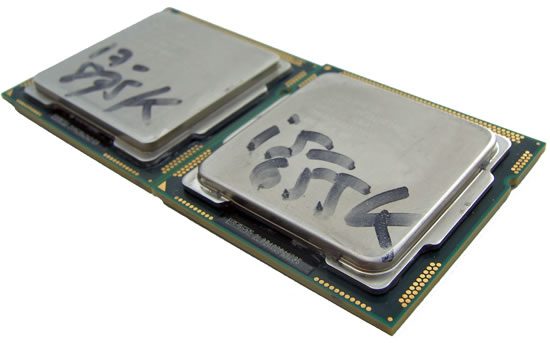Anandtech has served up a healthy appetizer of Intel's forthcoming Sandy Bridge architecture. The site got its mitts on a sample of the Core i5 2400, which is a quad-core CPU that runs at 3.1GHz and has 6MB of L3 cache. Like this year's Clarkdale/Arrandale chips, Sandy Bridge units will also carry an integrated GPU -- and if the 2400 is any indication, the new graphics core is pretty snappy for an Intel IGP.
In a nutshell, the test showed a 10% performance increase over today's similarly-clocked processors without consuming more power. More impressively, the integrated graphics outpaced a discrete ATI Radeon HD 5450 by a respectable margin in many benchmarks, showing playable frame rates on some recent games like Dragon Age: Origins, Modern Warfare 2, and BioShock 2 -- albeit on lower-quality settings.

Sadly, Intel plans to complicate the process of overclocking (again). The company will sell most mainstream Sandy Bridge processors with locked (or "partially unlocked") multipliers. Overclockers will have to purchase K-series products, which will be unlocked at a premium price. Be sure to read Anand's exhaustive 13-page preview here.
https://www.techspot.com/news/40128-sandy-bridge-sample-tested-shows-major-graphics-boost.html